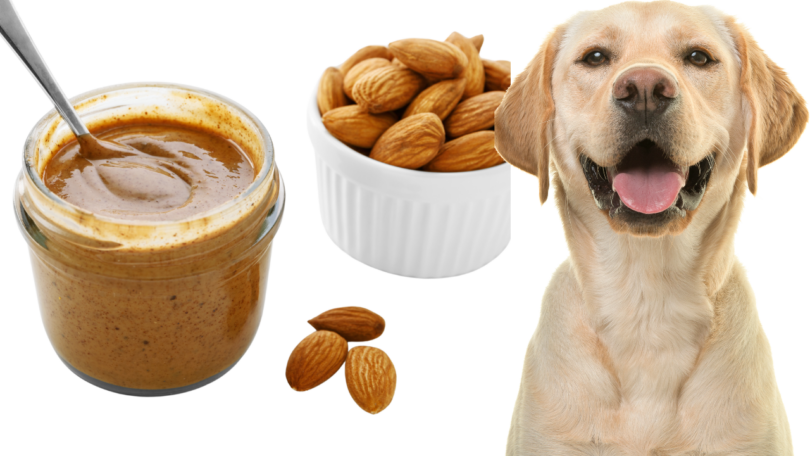Many pet owners know the joy of sharing a snack with their furry companion. That hopeful gaze when you reach for the jar of almond butter—should you indulge them? While this creamy spread has gained traction as a nutrient-rich alternative to peanut-based products, not all human foods align with animal health needs.
Almond butter offers protein and healthy fats, but its suitability depends on preparation and portion control. Unlike raw almonds, which pose choking hazards, roasted versions are safer. However, additives like sugar, salt, or xylitol—common in store-bought varieties—can harm pets. Always check labels before sharing.
Veterinarians emphasize moderation. Even natural nut butters are calorie-dense and may upset sensitive stomachs. Allergies also play a role: some animals react poorly to tree nuts. Introduce small amounts gradually, monitoring for adverse effects like vomiting or lethargy.
Balancing benefits and risks requires understanding your pet’s unique needs. Consult a nutritionist to ensure treats complement their diet rather than compromise it. Knowledge empowers responsible choices, keeping tails wagging safely.
Understanding Nut Butters for Dogs
When it comes to sharing snacks, pet parents must navigate a maze of nutritional do’s and don’ts. Nut-based spreads often spark curiosity due to their popularity in human diets, but their suitability for animals requires careful evaluation.
Nutritional Benefits of Nut Butters
High-quality varieties provide protein for muscle health and omega fatty acids for skin and coat vitality. Vitamin E in these spreads acts as an antioxidant, supporting cellular function. Almond options stand out for their magnesium content, which aids bone strength when served sparingly.
Compared to peanut-based products, almond versions typically contain more monounsaturated fats. These “good fats” may help maintain healthy cholesterol levels in active pets. Always prioritize unsweetened, single-ingredient options to maximize benefits.
Common Risks and Allergen Concerns
Despite their advantages, these calorie-dense foods pose challenges. A 2023 veterinary study found 18% of dogs showed sensitivity to tree nuts. Symptoms like itching or digestive upset signal potential allergies requiring immediate attention.
Xylitol remains a critical concern—this sugar substitute appears in 15% of commercial nut butters and causes rapid blood sugar drops in animals. Other additives like chocolate or excessive salt heighten risks. Reading labels becomes non-negotiable: safe choices list only roasted nuts without artificial sweeteners.
can dogs eat almond butter: Safety & Risks
Navigating treat choices requires balancing taste and safety. While some human foods complement animal diets, others carry hidden dangers. Proper preparation and awareness transform potential risks into occasional rewards.
Dos and Don’ts for Feeding Almond Butter
Start with a pea-sized portion to test tolerance. Unsweetened varieties without additives are safest. For small breeds, limit intake to ¼ teaspoon weekly—larger pets may handle up to 1 teaspoon.
Avoid products containing xylitol, a sweetener causing rapid health decline in animals. High fat content can trigger pancreatitis if overfed. Watch for scratching, diarrhea, or unusual lethargy after initial exposure.
Never substitute nut spreads for balanced dog food. Pair tiny amounts with interactive toys or medication concealment. Always store jars securely to prevent accidental overconsumption.
Contact your vet immediately if vomiting or swelling occurs. Persistent symptoms may indicate allergies requiring dietary adjustments. Professional guidance ensures treats remain occasional pleasures rather than health threats.
How Almond Butter Compares to Other Nut Butters
How does almond butter stack up against popular alternatives? Pet owners seeking variety often explore different spreads to enrich their companion’s diet while maintaining nutritional balance.
Peanut Butter vs. Almond Butter
Traditional peanut butter typically offers more protein—7 grams per serving compared to almond’s 6 grams. However, almond varieties contain nearly double the monounsaturated fats. These “good fats” support heart health in active pets when consumed moderately.
Magnesium levels in almond-based options are three times higher than peanut versions. This mineral aids bone development and nerve function. Both spreads provide vitamin E, though almond butter delivers 50% more per tablespoon.
Exploring Cashew, Sunflower Seed, and Other Alternatives
Cashew butter contains less protein but boasts easier digestibility for sensitive stomachs. Its creamy texture makes it ideal for stuffing chew toys. Sunflower seed spreads emerge as safe options for pets with tree nut allergies.
Always verify ingredient lists. Many commercial cashew products include added oils or sweeteners. Unsweetened sunflower butters often provide vitamin B6 and iron without unnecessary additives.
While these alternatives offer diversity, portion control remains critical. A teaspoon of any nut-based spread equals roughly 30 calories—nearly 10% of a small pet’s daily intake. Rotate options to balance nutritional profiles and prevent boredom.
What to Look for in Dog-Safe Almond Butter
Selecting the right spread for your pet starts with understanding labels. Ingredient quality separates safe options from potential hazards. Always prioritize simplicity and transparency when evaluating products.
Identifying Harmful Additives and Xylitol
Check every label for xylitol—a toxic sweetener causing life-threatening reactions. This ingredient appears in sugar-free products and some flavored varieties. Avoid anything with artificial sweeteners, chocolate, or excessive salt.
Natural almond butter should list only roasted nuts. Steer clear of added oils, preservatives, or flavor enhancers. Brands like Once Again and Justin’s offer single-ingredient options ideal for pets.
Choosing the Right Brand and Ingredient Transparency
Trustworthy companies clearly state sourcing and processing methods. Look for USDA Organic or Non-GMO Project Verified certifications. These indicators often reflect stricter quality controls.
MaraNatha and Barney Butter provide detailed ingredient breakdowns online. Compare nutritional panels: safe choices have under 1g of sugar and 5mg of sodium per serving. Consult your vet if uncertain about unfamiliar components.
Pure formulations prevent digestive distress and allergic reactions. Introduce new products slowly, watching for changes in energy or stool quality. Responsible choices protect your companion’s health while offering tasty rewards.
Introducing Almond Butter into Your Dog’s Diet
Integrating new foods requires careful planning to maintain nutritional balance. Start with minimal quantities to assess compatibility with your pet’s digestive system.
Starting with Small Amounts and Monitoring Reactions
Begin with a ¼ teaspoon serving for small breeds or ½ teaspoon for larger pets. Observe for 24-48 hours for signs like excessive scratching or loose stools. Healthy reactions include normal energy levels and consistent appetite.
Creative Ways to Incorporate Almond Butter in Treats
Spread thin layers on chew toys for mental stimulation. Mix with mashed pumpkin to create frozen snacks. Combine with oat flour and unsweetened applesauce for homemade biscuits. These methods provide enrichment without overfeeding.
When to Consult Your Veterinarian
Seek professional advice if vomiting, swelling, or persistent diarrhea occurs. Pets with pre-existing conditions like pancreatitis need tailored guidance. Annual checkups help adjust treat allowances as dietary needs evolve.
Always prioritize vet-approved dog food over supplemental snacks. Track weekly intake to prevent high-fat overload. Responsible feeding strengthens the bond between pets and owners through safe, enjoyable interactions.
Final Thoughts on Pet Nutrition and Safe Treats
Balancing nutrition and safety forms the cornerstone of responsible pet ownership. When considering treats like almond butter, prioritize products free from xylitol and excess sodium. Natural nut spreads offer protein and healthy fats but require strict portion control to avoid digestive issues.
Always verify labels for hidden dangers—artificial sweeteners and macadamia nuts pose serious health risks. Rotate options like cashew or sunflower seed butter to diversify nutrients while minimizing allergy potential. Introduce new foods gradually, watching for reactions like itching or stomach upset.
Consulting a veterinarian ensures personalized guidance, especially for pets with existing conditions. Treats should complement—not replace—balanced meals. Scientific insights help owners navigate conflicting information confidently.
By staying informed and vigilant, you create a rewarding snack routine that supports long-term wellness. Your companion’s thriving health remains the ultimate measure of thoughtful care.
FAQ
Are nut butters nutritionally beneficial for pets?
Certain nut butters, like unsalted peanut or almond varieties, provide healthy fats, protein, and vitamins. However, they should only supplement a balanced diet due to their high calorie content. Always prioritize pet-specific formulas over human products.
What additives make almond butter unsafe for dogs?
Xylitol, a sugar substitute found in some brands like Justin’s or Nutiva, is highly toxic. Excess salt, artificial sweeteners, or preservatives like BHA/BHT also pose risks. Check labels for minimal ingredients—ideally just almonds.
How much almond butter can a dog safely consume?
Veterinarians recommend limiting intake to ½ teaspoon per 10 pounds of body weight, 1-2 times weekly. Overfeeding may lead to pancreatitis or obesity due to the high fat content. Monitor for allergic reactions like itching or digestive upset.










Leave a Comment